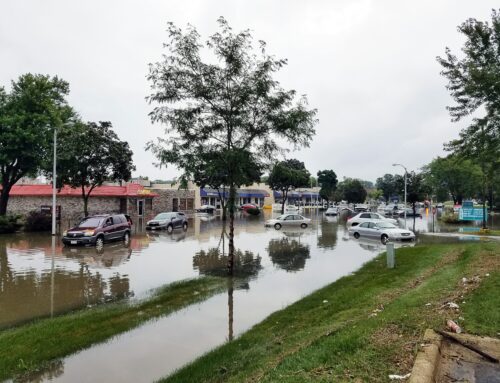There’s a buzz around town about infrastructure.
Sure, it’s not up there like the border wall or tax reform, but President Trump’s promise of $1 trillion for infrastructure spending has the chattering class going, Democrats enthused and Republicans uneasy.
In a roughly two week span, the Heritage Foundation, Brookings Institution, and Bipartisan Policy Center will have all held panel discussions on infrastructure spending. What should be built, how to finance it, how long does it last? Senate Democrats trotted out their $1 trillion infrastructure package, while Congressional Republican leadership seems leery.
It’s easy to understand the GOP unease. At $1 trillion the infrastructure package would be more expensive (even on cost-adjusted basis) than the 2009 $821 billion stimulus (American Recovery and Reinvestment Act) under President Obama, a third of which was actually tax cuts. Also, both the President and Senate Democrats have talked about a new infrastructure package as a jobs measure with the Democrats claiming 15 million new jobs. And while all policymakers want job growth, most Republicans don’t subscribe to the Keynesian argument that government spending creates jobs.
But let’s unwind that jobs number. First it is based on a 2011 estimate that for every $1 billion spent on highway and transit projects 13,000 jobs would be created. For one year. This counts direct, indirect, and induced jobs (people with jobs spend more helping create other jobs). But the $1 trillion investment being floated isn’t just for highways and transit, so we can’t be sure if more or less jobs would be created by other types of projects. The unemployment rate in 2011 was close to 9 percent, in January 2017 it was less than 5 – that means it will cost more per job. Lastly – is simple math. A trillion dollars is equal to 100 x $1 billion. If $1 billion creates 13,000 jobs, then $1 trillion would be 13 million jobs not 15 million. But why let math get in the way of nice round figures?
Furthermore even Keynesians are skeptical of the jobs argument at this time. At the Brookings Institution event on financing infrastructure President Obama’s Chair of the Council of Economic Advisors Jason Furman commented on the issue: “We are close enough to full employment and infrastructure has enough of a lag that I don’t think the Keynesian arguments are particularly important… and [I] wouldn’t do it at the expense of our medium and long-run deficit.”
Which gets to another sticking point. How do you pay for the infrastructure plan?. Pretty soon, the country will have a $20 trillion debt both to the public and itself. The public debt, which has averaged 40 percent of Gross Domestic Product (GDP) over the last 50 years, was 77 percent of GDP at the end of fiscal year 2016, the highest it has been since 1950. So borrowing and dumping more debt on the pile is not the answer.
Options that have been floated for financing infrastructure include public private partnerships (P3s), various tax credits, and an infrastructure bank. None of these proposals are new and all face challenges. P3s have greater financing costs (borrowing at private sector rates rather than governmental) and generally require some sort of revenue generating mechanism (toll or user fee) or direct public payments to get the private partner an attractive return on investment. You really have to have the Goldilocks type of project and even then there is a significant failure rate. Tax credits represent lost revenue, may be inadequate to finance enough of an infrastructure investment, and rely on future tax revenue generated by workers and future project performance to offset the cost. An infrastructure bank tries to use federal support through loans and loan guarantees to finance investments, but history shows it’s tricky to strike the right balance between safe investments and risk. And experience tells us that all these models have the potential to leave the down-side risk on the taxpayer with the potential rewards going to the private sector.
The other issue that comes up is what exactly is infrastructure and how to prioritize investment. The Senate Democrats’ proposal includes items that are not typical federal investments like local schools. Another category, wastewater and drinking water projects, historically get some federal support through revolving loan funds, but are mostly funded at the state and local level with ratepayers of those services.
To be sure, the country needs infrastructure investment. But the national debt situation – and common sense — demand prioritization. If you’re going to spend more than $20 billion on a border wall, that’s money that isn’t available for other investments. Just because projects to deepen ports or build new inland water navigation structures are approved doesn’t mean they have good returns on investment. States need to prioritize road repair over new construction. In some cases removing obsolete infrastructure like some dams or roads will be less costly in the long run. Investing in inter-modal connections that often fall through the cracks of more targeted modal funding streams could have greater returns. Large infusions of post-disaster cash for rebuilding should be used to make infrastructure and people less vulnerable to future disasters.
Clearly, there are a lot of difficult questions about not just how to finance infrastructure but also what to finance. Flawed as it is, the Senate Democrats came up with their infrastructure plan. And while it may have been a “put your money where your mouth is” challenge to the Trump Administration and an effort to drive a wedge between President Trump and the GOP leaders, it is nonetheless a plan on paper. It is up to the rest of Congress and the Administration to come up with a targeted, fiscally responsible plan to deal with infrastructure investments. We are waiting.











Get Social